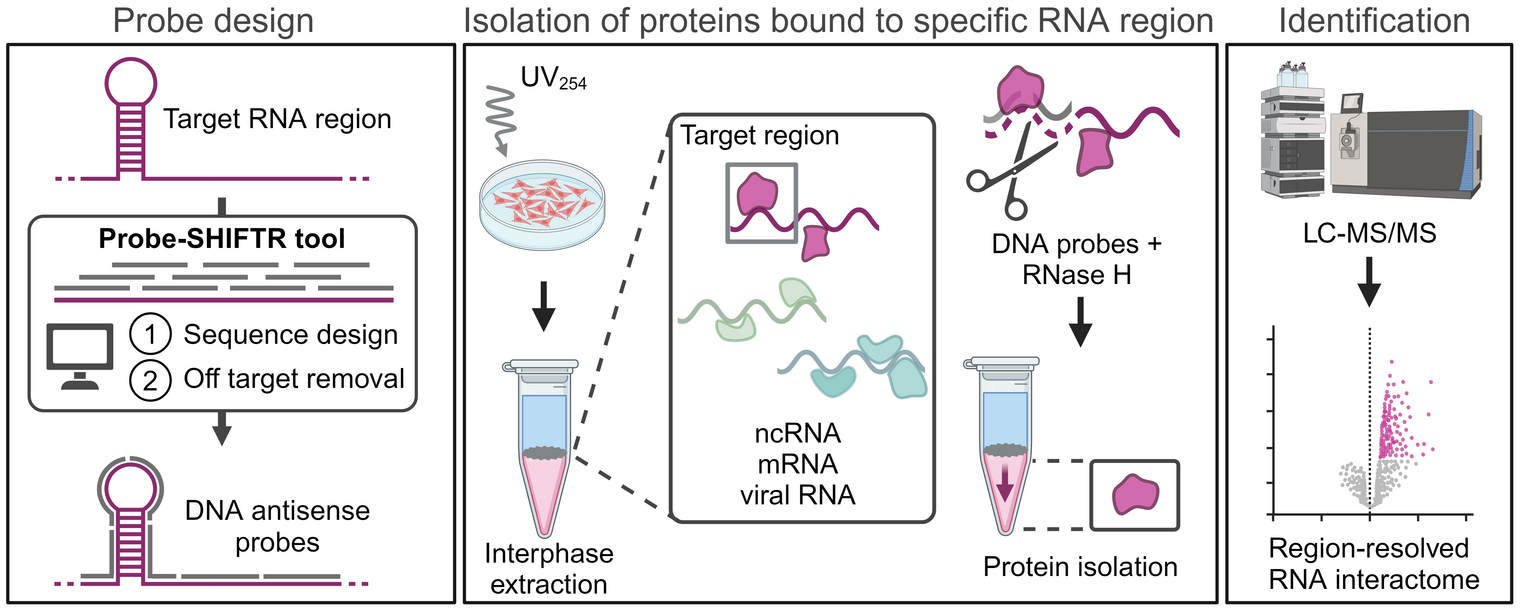“Until now, it has not been possible to study the interplay between proteins and individual RNA regions in live cells without genetic manipulation, for instance, by adding tag sequences to the target RNA. Our method, called SHIFTR, finally delivers this and is easy to execute, too. Beyond region-resolution, SHIFTR also requires orders of magnitudes fewer input material compared to the state-of-the-art, is highly scalable and cost-effective,” explains Mathias Munschauer, who leads a research group at the Helmholtz Institute Würzburg, a site of the Braunschweig Helmholtz Centre for Infection Research (HZI) in cooperation with the Julius-Maximilians-Universität (JMU) Würzburg.
“With this new tool we can determine the interactions for practically every cellular RNA and every regulatory element within these RNAs,” says Jens Aydin, a PhD student in Mathias Munschauer's research group and the first author of the study in Nucleic Acids Research. “This can fundamentally change the way we look at RNA in the cell—a crucial milestone,” adds Munschauer.
SARS-CoV-2 in focus
Using the new method, the research team was able to shed further light on the replication process of SARS-CoV-2. The scientists separately examined different sequence regions within authentic SARS-CoV-2 RNAs produced during infection and were able to interrogate the 5’ and 3’ terminal regions of the viral RNA for the first time. These regions are known to contain untranslated regulatory elements that control protein synthesis and RNA stability, as well as the replication of the viral genome. In addition to known interactors, they uncovered previously unknown interactions with proteins linked to the biogenesis of viral RNAs. Some of these newly discovered interactions could serve as targets for innovative antiviral therapies.
In the future, SHIFTR can be harnessed to better understand how cellular transcriptomes, the entirety of RNA molecules in a cell, are regulated in health and disease, which may uncover novel regulatory interdependencies and drug targets. Moreover, researchers can also use the SHIFTR platform to characterize how RNA-based therapeutics interface with the regulatory machinery of the target cell, which could inspire efforts to design optimized RNA-based drugs, such as mRNA vaccines.


